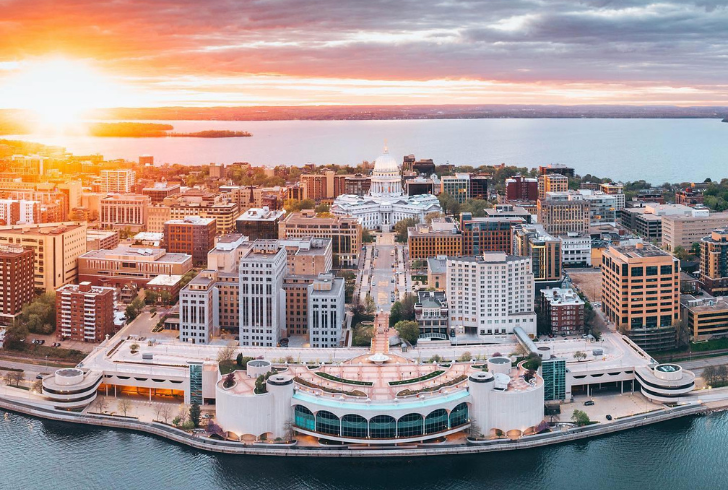Thrift shopping has evolved from a budget-friendly necessity to a popular lifestyle choice. Once seen as a last resort for affordable clothing, thrifting is now a mainstream trend driven by sustainability, affordability, and the thrill of finding one-of-a-kind pieces.
With rising interest, thrift stores across the U.S. have experienced both increased demand and shifting price points. Some cities stand out as prime spots for thrifting, while others fall short in affordability and variety.
The Rise of Thrifting
Thrift shopping has gained popularity for various reasons. Social media has played a significant role in shifting perceptions, showcasing thrifted finds as fashionable, unique, and environmentally responsible. Many shoppers are drawn to secondhand clothing as an alternative to fast fashion, reducing waste while curating a wardrobe that reflects their personal style.

A recent survey revealed that:
1. 88% of thrift shoppers do so to save money.
2. 41% enjoy finding unique clothing pieces.
3. 35% love the “treasure hunt” experience.
Additionally, thrifting has become a generational trend. Gen Z leads the way, saving an average of $289 per month, followed by millennials at $160, Gen X at $134, and baby boomers at $41. The financial benefits, combined with a growing appreciation for vintage and secondhand goods, make thrifting an appealing option for people of all ages.
Why Thrift Shopping Has Gained Momentum
Younger shoppers have redefined thrifting as an essential part of sustainable living and self-expression. Where secondhand shopping was once stigmatized, it is now embraced as a conscious and stylish choice. Many consumers see it as an opportunity to find distinctive fashion items while contributing to a more eco-friendly way of shopping.
One experienced thrift shopper shared how thrift stores became a go-to for finding clothing that matched his unique style. “It wasn’t always easy to find the looks I wanted in regular stores, but thrift shops had the kind of vintage fashion that stood out,” he explained. Initially, affordability was the main reason for shopping secondhand, but over time, the appeal of finding rare pieces and reducing fashion waste became equally important.
The Downsides of Thrifting’s Popularity
With rising demand, thrift stores have adjusted their pricing, leading to noticeable increases in costs. In a recent survey, 71% of respondents stated they had seen prices go up over the past year, and 50% felt thrift shopping was becoming too expensive.
Experts attribute this shift to higher demand, with thrift stores pricing premium and vintage items accordingly. Additionally, online resale platforms have further influenced prices, as many individuals purchase secondhand goods to resell them at a profit. This trend, while contributing to the growth of the thrifting market, has made it harder for shoppers to find budget-friendly deals.
One long-time thrifter noted the change, saying, “A few years ago, I could grab an amazing pair of shoes for five bucks. Now, that same pair costs $30.” Despite the price increase, he continues to shop secondhand, appreciating the value of unique finds and sustainability.
Where to Find the Best Thrift Stores
Certain cities offer a better thrifting experience due to their variety, affordability, and number of thrift stores. According to research based on store availability, pricing, and customer ratings, the top thrift shopping cities include:
1. New York, NY
2. Newark, NJ
3. Los Angeles, CA
4. Long Beach, CA
5. Oakland, CA
6. Arlington, TX
7. Irvine, CA
8. Jersey City, NJ
9. San Bernardino, CA
10. Chicago, IL
These cities have a strong thrifting culture, with stores ranging from high-end vintage boutiques to affordable community thrift shops.
Cities Where Thrift Shopping Falls Short

While some areas excel in thrift store options, others rank low due to limited stores, high prices, or lack of variety. The bottom-ranked cities for thrifting include:
1. Laredo, TX
2. Lubbock, TX
3. Anchorage, AK
4. Corpus Christi, TX
5. Wichita, KS
6. Memphis, TN
7. Madison, WI
8. Scottsdale, AZ
9. Bakersfield, CA
10. El Paso, TX
However, even in these locations, hidden gems can still be found. Many smaller cities offer locally owned thrift shops that cater to niche styles or specialty items, making the hunt for unique finds worthwhile.
Is Thrifting Still Worth It?
Despite increasing prices in some stores, thrift shopping remains an excellent way to find unique fashion, save money, and support sustainable shopping habits. While major cities often provide the best variety, smaller towns may hold unexpected surprises.
Thrift shopping is no longer just about saving a few dollars—it’s about making conscious choices, curating a wardrobe with personality, and finding hidden treasures that can’t be bought off a regular store rack. Whether looking for vintage clothing, affordable furniture, or rare collectibles, thrifting continues to offer something special for every shopper.




